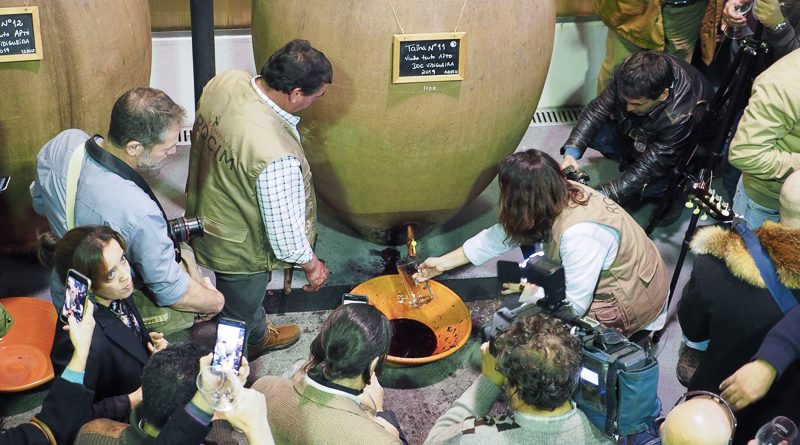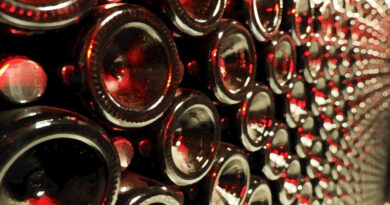Made in clay (1): Talha Day, a festival of amphora wines
Jamie Goode and Treve Ring attend Amphora Wine Day at Herdade do Rocim in the Alentejo, Portugal. In this two part series, there are notes on all the wines tasted – a really interesting selection.
We leave Lisbon and head for the Alentejo. It’s Talha day!
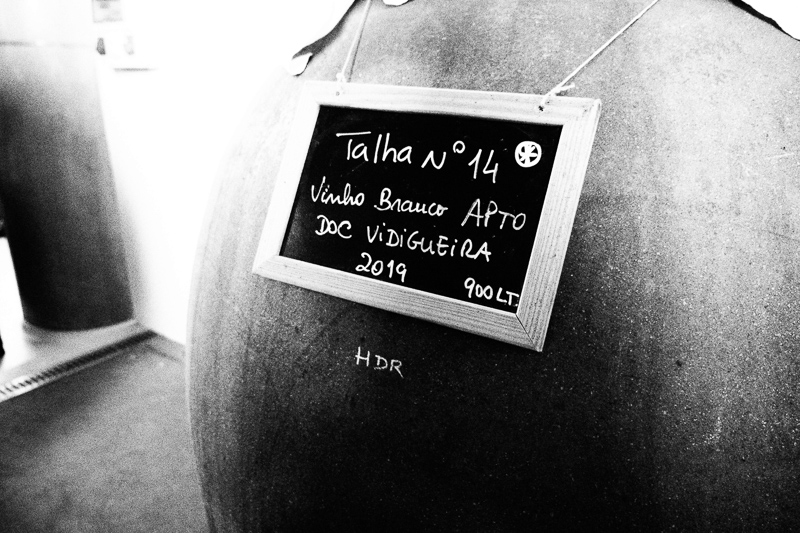
Amphora Wine Day is a very new feature in the wine calendar, celebrating the revival of a very old tradition in the Alentejo: making wine in talha, the large clay amphorae native to the region. The event was on November 16, 2019, just after St. Martin’s Day (November 11), historically the first day you can open the talha.
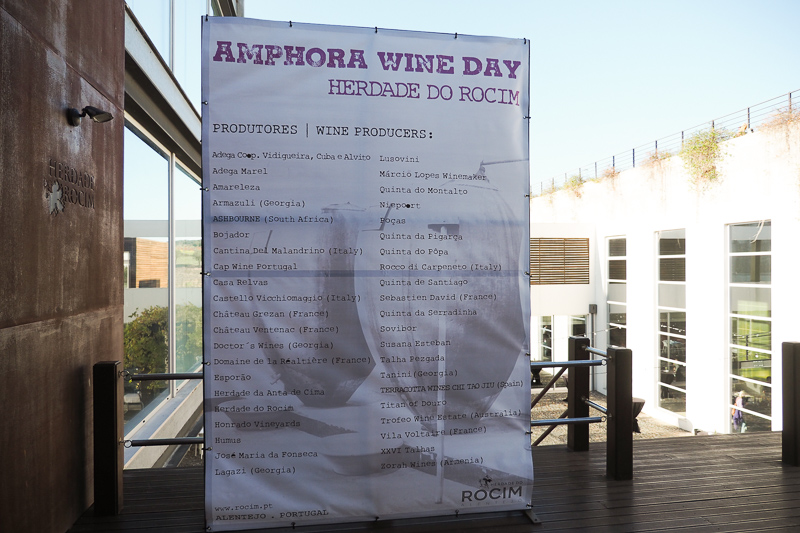
We’re being driven by David Rego, export director of Herdade de Rocim, who host the event. He explains that last year they had 1200 attendees and were bursting at the seams (they were expecting 400 people). They’ve restricted tickets to the 1200 people this year, and it’s a sell-out. They’ve started welcoming amphora-wine producers from other regions as well; this year there were 42 wineries, 27 from Portugal, and the rest from Georgia, Italy, France, Spain, Armenia, and Australia.
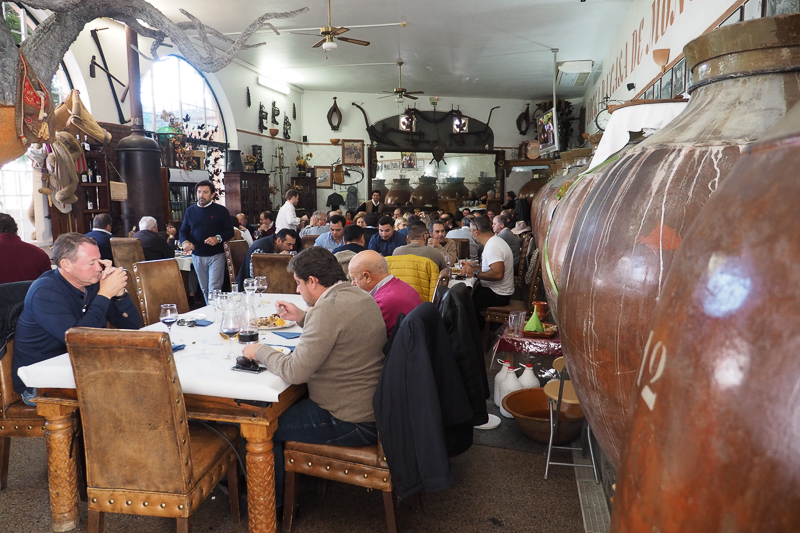
On the way, we stop for lunch in Cuba at a restaurant that celebrates the talha: Casa de Monte Pedral. The food is simple, but the appeal here is that you drink the wine from one of the talhas that line the wall of the dining room.
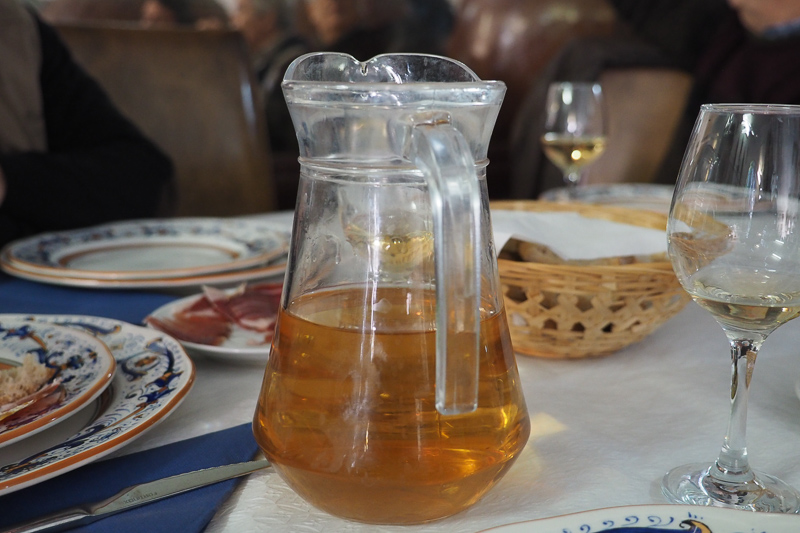
The white has some colour, and it’s grainy and slightly oxidative, with notes of apple, pear and spice. It’s from this vintage. It’s muted, but wholesome. The red is deep coloured, and has a little volatility. It has chunky tannins and is vivid and grainy with nice brightness and a salty, slightly cheesy edge.
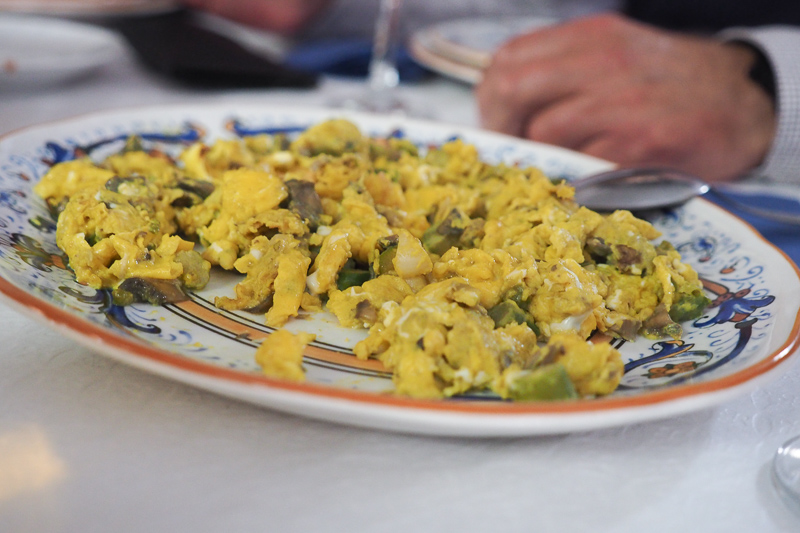
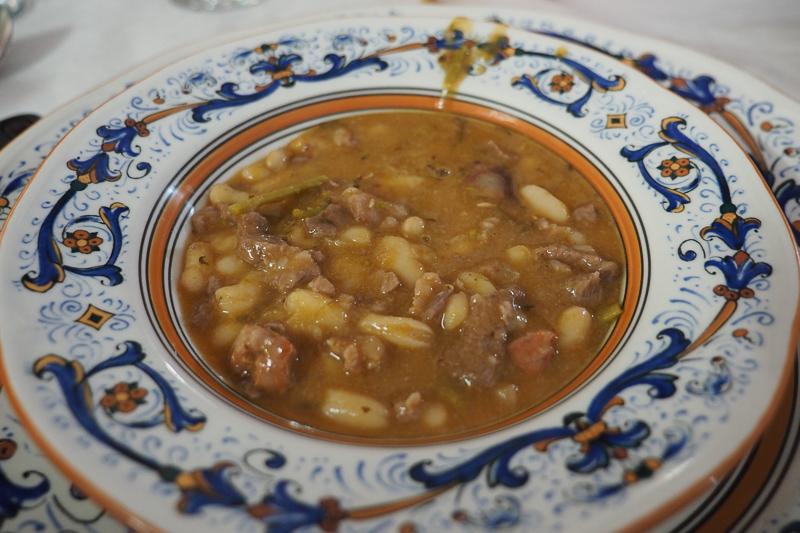
Rocim started bottling their talha wines seven years ago, and Rego says that at the time everyone laughed at them. They have 26 talhas now, and would like more. ‘It’s tough to find them,’ says Rego. ‘You really need to dig around to find someone who has a talha at their place that they aren’t using.’ The talha wine now make up 10% of their business.
Rocim don’t use sulfur dioxide during talha vinification, but they do add some before bottling. ‘For those who don’t bottle sulfur is not on the menu,’ says Rego.
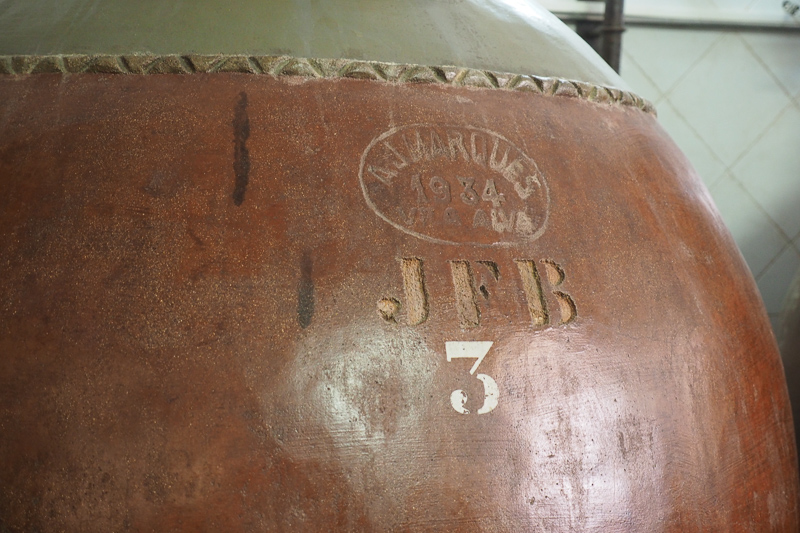
The typical way of using talha in the Alentejo (the word is a registered term for that region) is to use some whole bunch, or even completely whole bunch. The amphorae are lined with pez, which is a mix of pine resin and beeswax. Traditionally every vintner would have his/her own recipe for pez. The top of the amphora isn’t sealed: instead there’s a layer of olive oil on top of the wine, and a cloth will be placed over the opening to keep bugs out.
We arrive at the winery in early afternoon and begin tasting. It’s already heaving with keen winemakers and wine drinkers, mostly from Portugal, but we find many familiar faces from across Europe. Clearly, talha wines are popular, and there is a lot of energy here.
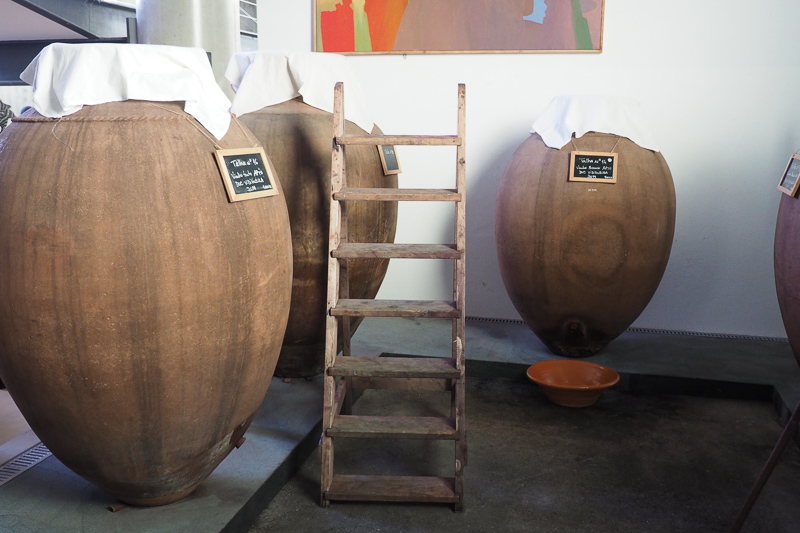
*Goode has scored the wines, Ring has not, but she has starred the most impressive of the tasting
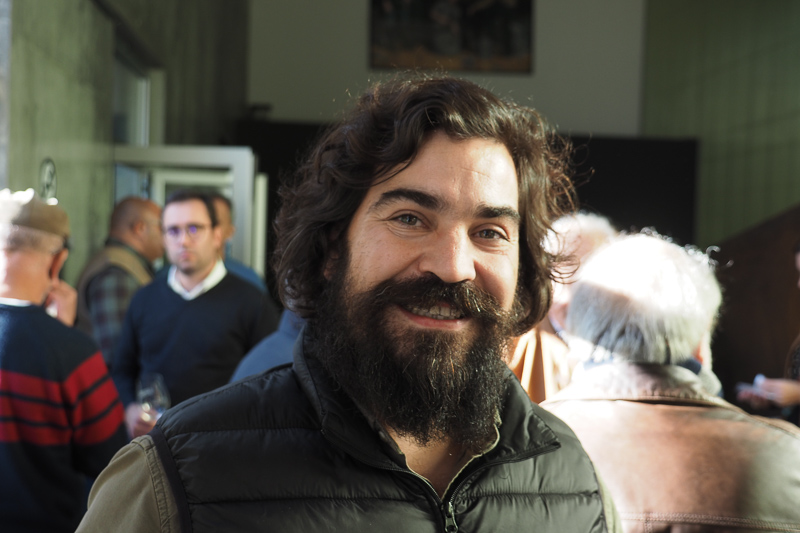
Márcio Lopes Winemaker
Márcio buys 500 litre amphorae from Southern Spain, as well as Northern Italy.
Selvagem 2019 Vinho Verde (cask sample)
This is a very interesting wine in that it’s made from vines that grow up a tree, in the ancient way. The grapes are destemmed by hand and fermented in an amphora for a month. This is varietal Azal. It’s juicy and lemony and a bit cloudy (a sample) and it has nice freshness. 91-93/100 (JG)
Márcio prefers to make monovarietal wines rather than blends, and this is old vine Azal, Cloudy, with peach fuzz and pear skin, this is taut with grapefruit to an astringent finish. Fresh and nimble. (TR)
Prodigo Tinto da Barca 2019 (cask sample)
This is still on skins in amphora – it has been there for 9 weeks so far. An old variety with low pH (3.3) and 13.5% alcohol. So fresh and linear with nice tannins. Bright and very fine with lovely structure and pure, floral fruit. 92-94/100 (JG)
Ensaios Saltos Moscatel 2019 Douro
Márcio started working with amphorae in the Douro last year, and this spends 15 days on skins after hand destemming into an amphora, and then it goes back to the amphora with lees after pressing. Floral, grapey and lively with a nice pithy edge, showing nice structure and some mandarin prettiness. 92-93/100 (JG)
This spends 15 days on skins, imparting bergamot and a charming sweet white floral character, light bodied, in a tight frame. (TR)
Prodigo Tinto da Barca 2019 Douro
This is a sample from amphora: the wine is still on skins. This is an old red variety that had a low pH (3.3). So fresh and linear with nice tannins. Bright, dry and fine showing nice structure and fine, floral fruit. 93-94/100 (JG)
Tinto da Barca is an ancient Douro variety, and here grows as it does best, on schist. Taken from amphora at 9 weeks, this is juicy, herbal, grippy and tight with a sapid plum note. Low alcohol, low pH. Cask sample; looking forward to final wine. (TR)

Susana Esteban
Susana started working with amphorae in 2017. She has three of them, of 700L. She doesn’t like to do any skin contact (although she did a little in 2019, and really liked the results). Her amphora wine comes from an 85 year old vineyard of mixed varieties in São Memade, in Portalegre. It’s north-facing, in a fresh area, and has perhaps 20 different varieties.
She presses, then decants, and then ferments in the amphora, controlling the temperature. ‘For me it is important to preserve the identity of the vineyard,’ she says, ‘but with the elegance of the amphora.’ The amphora here was made in 1861.
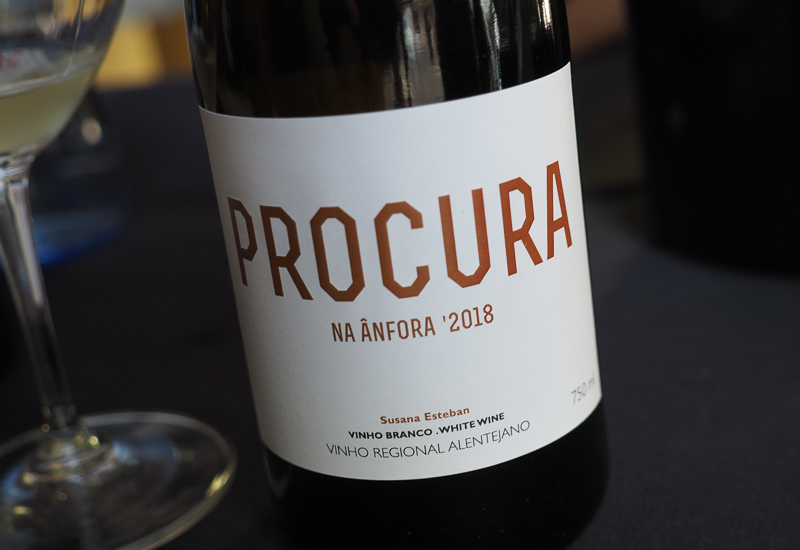
Procura Na Ânfora 2018 Alentejo
This is fresh with lovely pear and peach and melon. So pure and fresh with a nice structure. Just 12.5% alcohol. Subtle wax notes. So pure with a faint hint of mint and nice fruit purity. (JG)
Clear pear, light quince and ringing minerality throughout. Bright and shining. (TR)
Procura Na Ânfora 2019 Alentejo (sample)
This is with 50% skin contact, and it’s a sample. Fresh and a bit minty. Nice acid. Has grapefruit, lemon and pear with nice freshness. Juicy and grippy with nice brightness. 92-94/100 (JG)
She used 50% skin contact here for the first time, and really liked the ‘elegant’ result. Much more pronounced quince, tangerine in a tight, clean and sharp wine, finishing with white pepper and framed with a light grip. (TR)

Quinta de Santiago
This is an interesting collaboration project between lawyer Joana de Santiago, and Rocim’s Pedro Ribeiro. Joana comes from a winemaking family, and wanted to create a wine. The amphora is 1000 litres and was bought from Italy, and the wine is half Vinho Verde and half Alentejo. The Alentejo portion was fermented and aged on skins for two months, then it was taken out, and the wine added back with the Alvarinho from Vinho Verde that had been fermented in stainless steel, for another four months ageing in the amphora. This was the first Alvarinho Pedro has made.
Santiago na Ânfora do Rocim 2018
Intense and vivid with lemony fruit and some nuttiness, and a waxy, stony edge. Nice acidity and notes of herbs and fennel. 92/100 (JG)
Lovely peach, almond and anise in this tight, grippy, linear white. Fresh and bright. (TR)
Santiago na Ânfora do Rocim 2019 (sample)
Very floral and fruity. Linear, bright and pithy with good acidity. Pure and primary and very bright. 91-93 (JG)
Super floral and primary, with gum drop, fresh florals. Tight and linear. (TR)
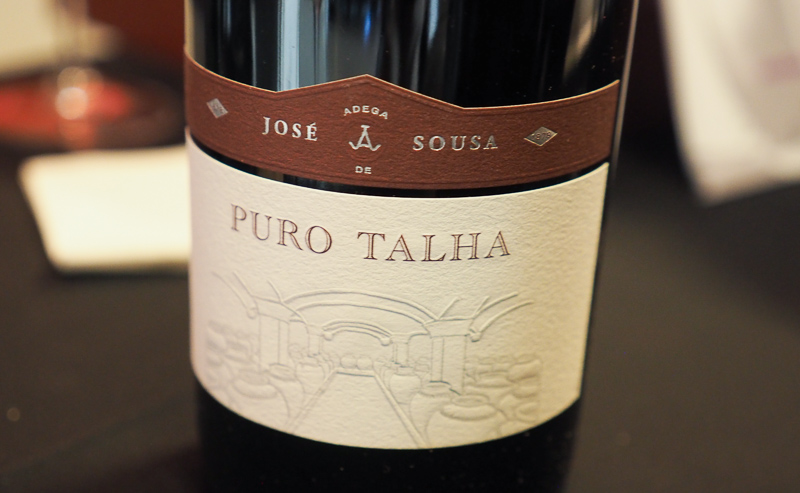
José Maria de Fonseca José de Sousa
This company has been one of the champions of talha wines. In their José de Sousa cellar they have 114 talha. For the red wine, the grapes are hand harvested, slightly foot crushed and destemmed by hand, and then fermented in talhas (typical capacity 1600 litres), with approximately 1/3 stems. Fermentation temperature is kept to around 28 C by spraying water on the clay surface four times a day. There’s a post-ferment maceration until November and then the wine is pressed and goes back to talhas for around 16 months, protected by a layer of olive oil. Two thirds of the blend is from talha and this is blended with some wine matured in 500 litre chestnut casks.
The white is made just in talhas, but there are no stems: the bunches are destemmed by hand. It spends a bit less time in the clay.
José de Sousa Puro Talha Branco 2016
A field blend from 0.3 hectares of grapes. Gold/copper colour with a mineral stony nose that shows some nuts and marmalade. There’s a savoury spicy edge to the palate and a hint of apricot. Grapey, structured. 92/100 (JG)
From a blend blend planted in the 1950s, this deeply orange hued wine swings with overt oxidation before a sweet honeyed edge joins in. This partially destemmed fruit spent 3 months on skins, then 8 months in tank, and 1 year in bottle. (TR)
José de Sousa Puro Tinto 2015
A blend of 50% Grand Noir with Trincadeira, Moreto and Aragonez. Two-thirds Talha, one-third chestnut barrels. Savoury, grainy and structured with some mature notes. Grippy, savoury and a bit smoky. Has some appeal. 90/100 (JG)
This field blend was planted in 1952, and spent 3 months on skins in talha before 16 months in pipe, partially chestnut. Very ripe and porto, with dusky, dense, chocolatey and prune fruit. Tannins are sticky to a grippy finish. Rustic. (TR)
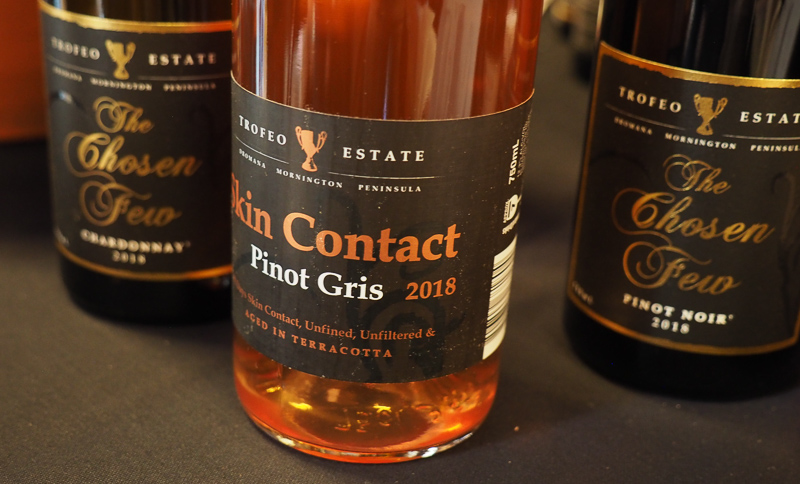
Trofeo Estate, Mornington Peninsula, Australia
Their amphorae came from Italy, and they are 250, 300, 400 and 800 litres in size.
Trofeo Estate Chardonnay 2018
Pressed to amphora. Stony and nutty with a soft mid-palate. Has some herbs and fennel. Sweet and grainy. 88/100 (JG)
Quite oxidative up front, with a creamy palate filled with wilted white florals and some sour white fruit on the grippy finish. (TR)
Trofeo Estate Skin Contact Pinot Gris 2018
Spicy, grainy and grippy with bright sweet pear fruit and a twist of citrus peel. Very lvely and expressive. 92/100 (JG)
Shining orange hue, with big bergamot tea, roses and grippy spices to a tight finish. * (TR)
Trofeo Estate The Chosen Few Pinot Noir 2018
Sweet strawberry and cherry fruit with a nice grippy edge and some lovely structure. Pure and fine-grained. 91/100 (JG)
Up front curls of smoke leads to raspberry, sour cherry, red current and forest berries. Finishes tight and fresh. (TR)
Trofeo Estate Shiraz The Chosen Few 2017
Fresh, bright and grippy with nice peppery notes. This is supple and expressive. Cool-climate in style with a hint of clove. 91/100 (JG)
Black cherry and blackcurrant is seasoned with ample black pepper, and hemmed by some hard press tannins. Juicy on the middle, this finishes with a cloud of smoke. (TR)
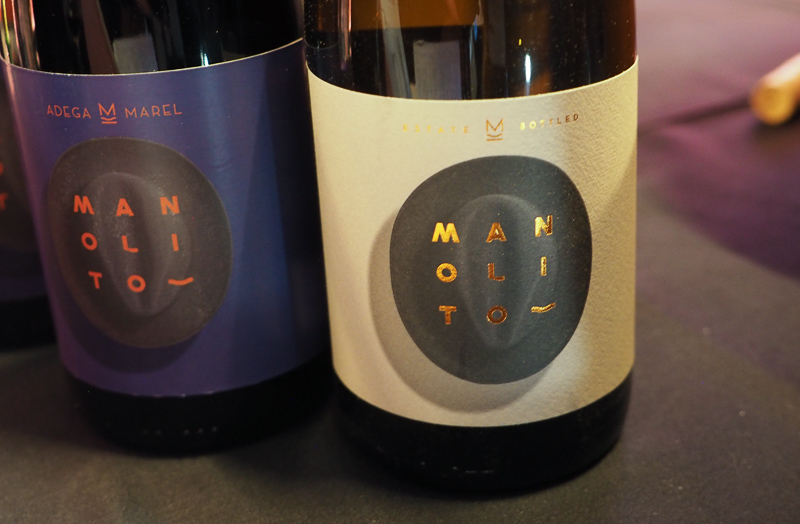
Adega Marel
These Alentejo wines come from a warm area near Spain.
Manolito Branco 2018 Alentejo, Portugal
A blend of stainless steel and Talha, with a field blend in the Talha and Antao Vaz in stainless steel, both on skins. Fruity, smooth and textured with a bit of skin character, rounded out by the stainless steel ferment fruitiness. Textural, pretty and smooth with nice sweet pear fruit. Very stylish. 91/100 (JG)
A blend of stainless (Antao Vaz, on lees) and 700L talha (old vine field blend on skins), this tight and tea grippy white sings with orange pith, tangerine, and a light bed of lees. Quite sharp (TR)
Tonico Tinto 2019 Alentejo, Portugal
This is a Talha opened last Wednesday, 900 litre capacity. Very distinctive with stony, incense-like notes with some rich pear and peach fruit. Very grippy and distinctive with some herbal hints. So unusual. 86-88/100
From the same vineyards as the Manolito Branco, this talha was filled from the top, and drawn from the bottom. Butterscotch and peach cordial fill the round, somewhat heavy palate, grippy and herbal. (TR)
Manolito Tinto 2018 Alentejo, Portugal
Moreto in Talha, Trincadeira in stainless steel. Fresh and a bit minty with pure raspberry and cherry fruit. Nice grippy structure: a lovely compact wine with fresh sweet fruit. 92/100 (JG)
Moreto (in talha) and Trincadeira (in stainless) come together in this fresh, bright, tight red, with bitter dark cherry, dark violet perfume, and light smoke rings. Lovely energy here. (TR)
Tonico Tinto 2019 Alentejo, Portugal
This is nutty and a bit mousy at first with bright cherries and spice and some raspberry grip. 84-86/100 (JG)
Savoury, meaty, salted, with smoke and sticky tannins ruling. This was moreto entirely in talha (TR)
Part 2 will have notes on the rest of the wines

